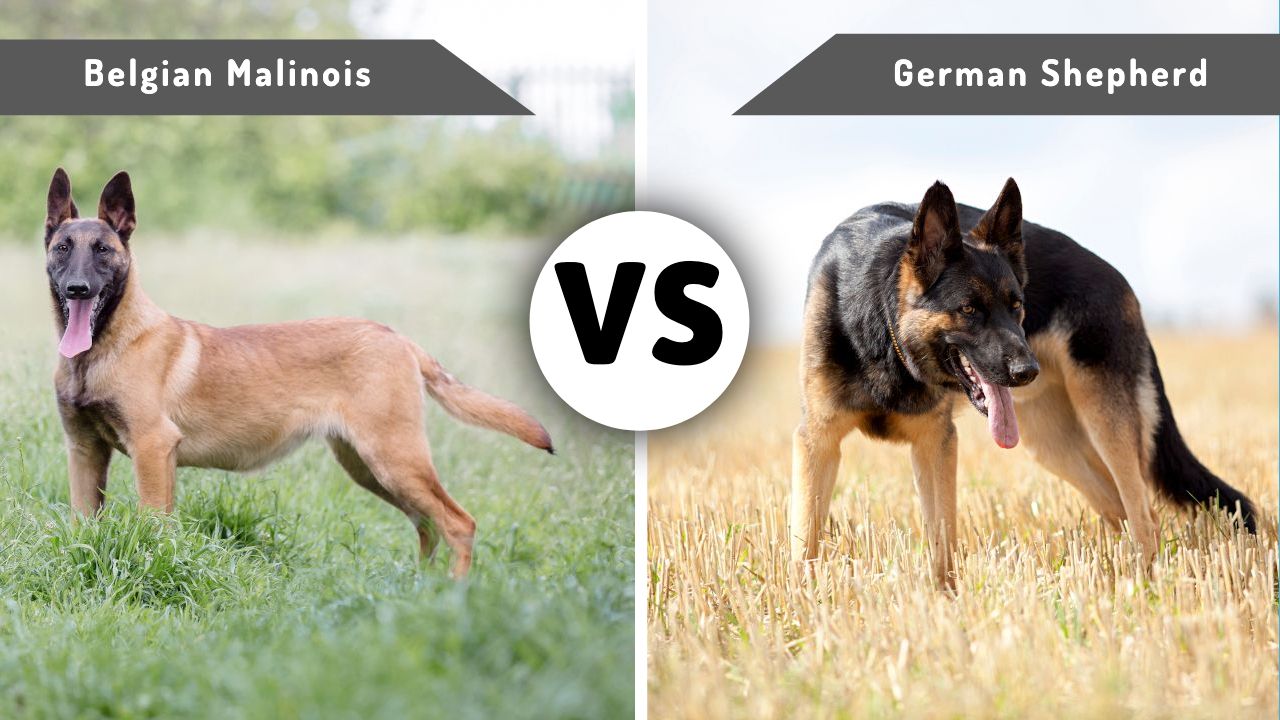
Welcome, dog lovers and enthusiasts! If you’re reading this, chances are you’re looking to welcome a new four-legged family member or simply want to broaden your knowledge about these fascinating creatures we call our best friends.
This article focuses on two prominent breeds admired worldwide for their intelligence, loyalty, and work ethic: the Belgian Malinois and the German Shepherd.
The Belgian Malinois and German Shepherd are both robust, agile, and highly trainable breeds, sharing many similarities due to their historical roles as working dogs. These qualities often lead to comparisons and debates among potential dog owners and breeders alike. So, how do you determine which breed is the right match for you?
This blog post aims to provide you with a comprehensive comparison between the Belgian Malinois and the German Shepherd, from their origins and physical characteristics to their temperaments, health, and suitability for different types of homes and owners.
So without further ado, let’s embark on this insightful journey together to explore the intricacies of these exceptional breeds.
You May Also Like: German Shepherd Puppy Price Guide
| BREED COMPARISON | ||
|---|---|---|
| Belgian Malinois | German Shepherd | |
| Weight | 40 - 80 pounds | 50 - 90 pounds |
| Height | 22 - 26 inches | 22 - 26 inches |
| Size | Medium to large | Medium to large |
| Temperament | Intelligent, confident, hardworking | Loyal, intelligent, courageous |
| Trainability | 4.0 out of 5.0 stars4.0 | 4.0 out of 5.0 stars4.0 |
| Energy Level | 5.0 out of 5.0 stars5.0 | 5.0 out of 5.0 stars5.0 |
| Life Expectancy | 14 - 16 years | 7 - 10 years |
| Shedding | 2.0 out of 5.0 stars2.0 | 5.0 out of 5.0 stars5.0 |
| Hypoallergenic | No | No |
| Puppy Costs | $800 - $9,000 | $800 - $10,000 |
| Suitable For | Belgian Malinois thrive in active households where they can expend their energy and engage their minds. They do well with owners who can provide ample exercise, training, and mental stimulation. | German Shepherds are loyal and protective dogs that form strong bonds with their families. They can adapt to a range of environments and are known to be good with children, making them a popular choice for family pets. |
Belgian Malinois vs. German Shepherd: Origins and History
Understanding the history of a dog breed is key to comprehending its inherent behaviors and traits. Let’s dig into the roots of both the Belgian Malinois and the German Shepherd to shed light on their backgrounds.
Belgian Malinois: The Belgian Shepherd
The Belgian Malinois, one of the four types of Belgian Shepherds, traces its roots back to the late 19th century in Belgium. Named after the Belgian city of Malines, these dogs were originally bred for herding purposes. Valued for their intelligence, agility, and hardworking nature, they were soon employed in various roles, including as search and rescue dogs and police dogs, and this breed even secured its role as a military dog in the armed forces.
These versatile canines are known to be highly trainable and quick to respond, making them a popular choice for various kinds of work beyond their original herding function.
German Shepherd: The Versatile Working Dog
The German Shepherd’s history starts in late 19th century Germany, where they were primarily used as herding dogs and to guard livestock. Captain Max von Stephanitz, a German cavalry officer, is credited with the breed’s creation. He wanted to develop a herding dog breed that was excellent for that specific purpose, and the result was the German Shepherd.
Their intelligence, trainability, and protective nature didn’t go unnoticed for long. German Shepherds quickly expanded their resume to include roles as police dogs, military dogs, guide dogs for visually impaired people, and search and rescue dogs.
Key Takeaway: From their historical roles, it is evident that both these herding breeds were developed with a strong work ethic in mind. This shared history sets the stage for further comparison in terms of physical characteristics, temperament, and more.
Comparing Physical Characteristics
Belgian Malinois: The Athletic Herder
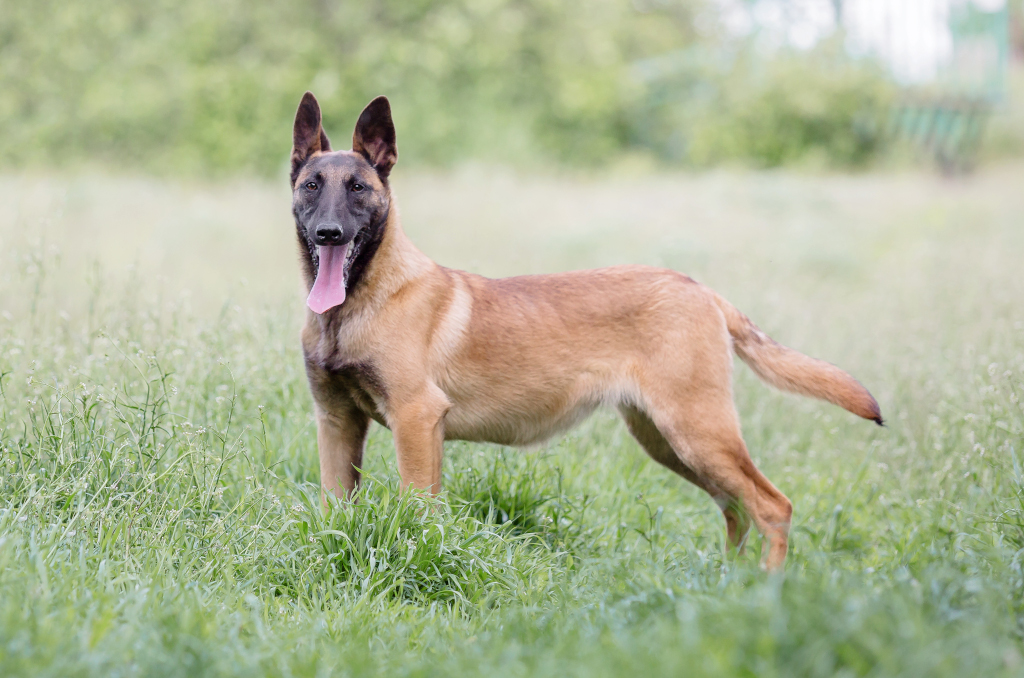
The Belgian Malinois is a medium-to-large breed with a robust and athletic build, reflecting their high energy levels and working history. These dogs typically stand between 22 to 26 inches tall at the shoulder, as per the American Kennel Club (AKC), with males being larger than females.
Weight can range anywhere from 40 to 80 pounds, with a leaner, muscular build that enhances agility and endurance. Their coat is typically fawn to mahogany and is characterized by a black mask and black ears. Belgian Malinois have a short, straight coat and a dense undercoat, providing them with adequate protection from the elements.
German Shepherd: The Noble Guardian
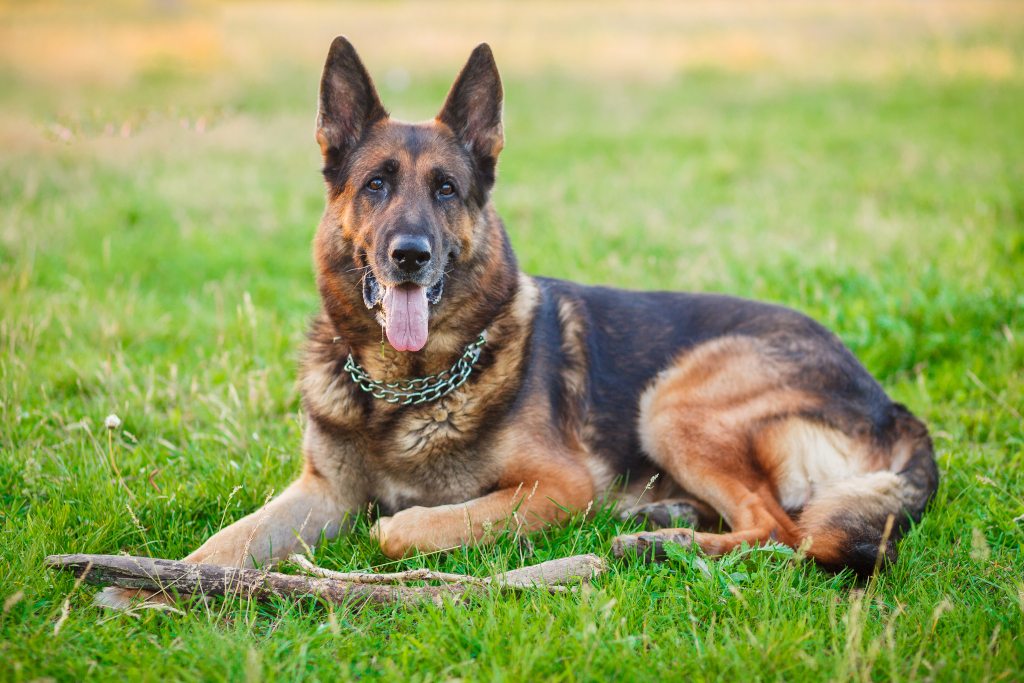
The German Shepherd is also a medium-to-large breed, typically standing between 22 to 26 inches tall at the shoulder. German Shepherds are slightly heavier than Belgian Malinois, weighing between 50 and 90 pounds. They possess a muscular and slightly elongated body that projects strength.
Their double coat is dense and straight and comes in various colors, although the most common is black and tan. The coat length can either be medium or long, and they are known to be heavy shedders, especially during the shedding season.
One notable physical feature of the German Shepherd is its distinctive silhouette with a level backline that slopes down from the shoulders to the tail, giving an impression of steady control and poised readiness.
You May Also Like: 5 German Shepherd Dog Variations
Key Takeaway: In summary, German Shepherds are slightly larger than Belgian Malinois. The Belgian Malinois tends to be more athletic and lean, while the German Shepherd exhibits a more robust and sturdy frame. Their coats are quite different, with the Malinois having a shorter coat and the German Shepherd being a heavy shedder.
Temperament and Personality: A Close Look
Moving beyond physical characteristics, the temperament and personality of a dog breed can significantly influence your experience as a dog owner. Here, we examine the temperament of both the German Shepherd and the Belgian Malinois.
Belgian Malinois: The Energetic and Focused
Malis are known for their high energy levels, drive, and dedication to work. They are quick learners with an innate need for a job, making them excellent working dogs in various fields. Their intellect and desire for activity mean they require plenty of mental and physical stimulation.
While loyal and protective of their families, the Belgian Malinois is often reserved with strangers and can be territorial. Early socialization is critical for this breed to ensure they grow up to be well-rounded dogs. This high-energy breed is not recommended for first-time dog owners or those with a more sedentary lifestyle, as they require rigorous exercise and engagement.
You May Also Like: Tips for Training Your Dog to Bike With You
German Shepherd: The Intelligent and Loyal Protector
German Shepherds are recognized for their intelligence, courage, and keen sense of duty. Like the Belgian Malinois, they are quick learners and excel in various roles, from police work to search and rescue and as service dogs.
German Shepherds are also known for their loyalty and tend to form strong bonds with their families. Plus, they are protective, which makes them excellent watchdogs. While they can be aloof with strangers, they are usually not aggressive without reason.
Although German Shepherds are active dogs, they are generally more relaxed compared to Belgian Malinois. They still require regular exercise and mental stimulation but may be slightly more adaptable to different lifestyle needs.
Key Takeaway: These two breeds have a lot in common in terms of their intelligent and protective nature. However, Belgian Malinois tend to be more energetic and intense, needing a substantial amount of exercise and engagement, while German Shepherds, though also active, can be a bit more laid back.
Trainability and Exercise Needs
A breed’s trainability and exercise needs can greatly influence the time, energy, and resources a potential owner will need to invest. Let’s discuss the Belgian Malinois’ and German Shepherd’s requirements in these areas.
Belgian Malinois: The Active Learner
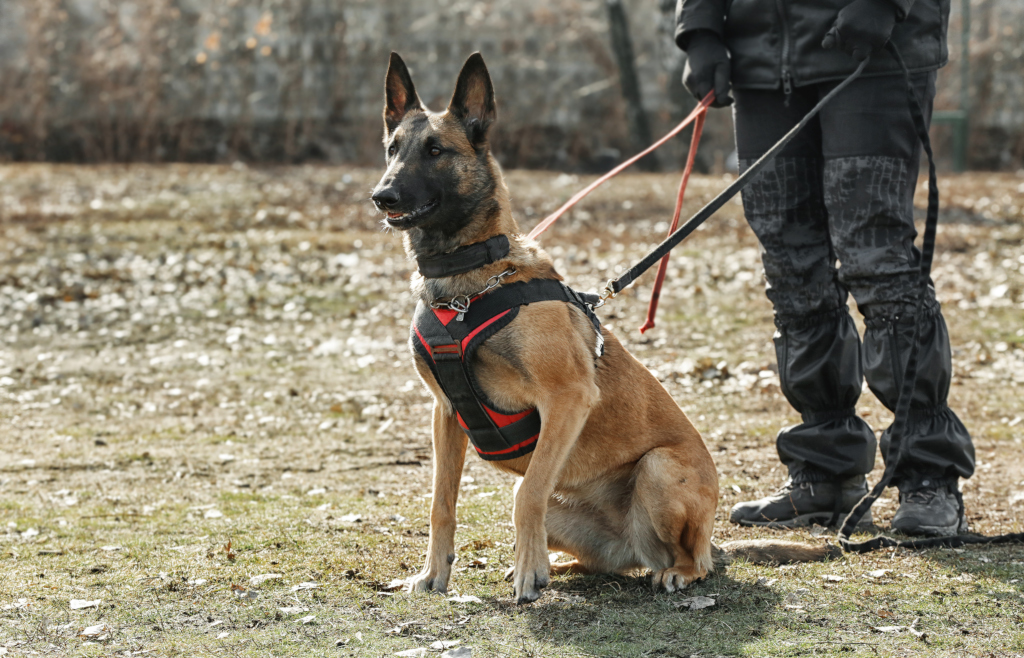
The Belgian Malinois’ high intelligence, combined with their drive to work, makes them highly trainable. They thrive in structured activities and tasks and often excel in obedience, agility, tracking, and herding trials. Their eager-to-please nature makes them very responsive to positive reinforcement training methods.
However, their high energy levels and active minds mean they require more than just a casual walk in the park. Regular, vigorous exercise is essential to keep a Belgian Malinois happy and healthy. They also need mental stimulation to prevent boredom, which could lead to destructive behavior. This could include puzzle toys, obedience training, or participation in dog sports.
You May Also Like: Tips for Building a Backyard Dog Run
German Shepherd: The Adaptable Athlete
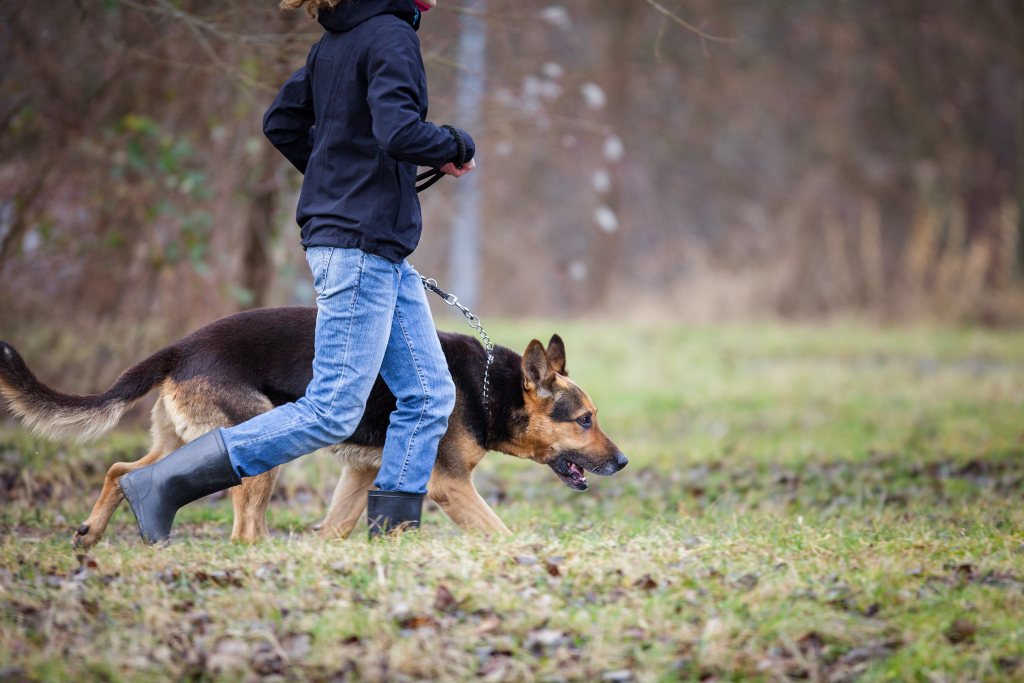
German Shepherds, much like the Belgian Malinois, are highly trainable. They are often top performers in obedience and agility trials and are known to be one of the most versatile working breeds. Training should be firm yet positive, as they respond well to rewards and praise.
While they are active and require regular exercise, German Shepherds might be a bit more adaptable than Belgian Malinois when it comes to exercise needs. A couple of good walks and runs combined with some playtime or tasks can be sufficient for some German Shepherds. However, remember that they also need mental stimulation, as they are highly intelligent dogs.
You May Also Like: Most Popular Dog Training Methods
Key Takeaway: Both Belgian Malinois and German Shepherds are highly trainable, though the latter is generally easier to train. And while they both need a decent amount of exercise, a Belgian Malinois requires more intensive physical activity and mental engagement than a German Shepherd.
Health
When considering a family dog, it’s essential to be aware of common health issues and expected lifespan. This knowledge can help prepare for potential future challenges and ensure your dog lives a healthy, happy life. In this section, we’ll explore the health and lifespan of both the Belgian Malinois and the German Shepherd.
Belgian Malinois: The Hardy Worker
Belgian Malinois are generally healthy dogs with a lifespan of 14-16 years, which is relatively long for dogs of their size. However, like all breeds, they are susceptible to certain health conditions. While not all Belgian Malinois will get any or all of these diseases, it’s crucial to be aware of them if you’re considering this breed.
Potential health issues include hip and elbow dysplasia, a common condition in larger dog breeds that can lead to discomfort and mobility issues. Eye disorders, such as cataracts and progressive retinal atrophy (PRA), and certain heart conditions can also occur.
You May Also Like: Why Won’t Dogs Sleep at Night?
German Shepherd: The Robust Guardian
German Shepherds typically have a lifespan of 7-10 years. Like the Belgian Malinois, they’re also prone to certain breed-specific health issues. German Shepherds are known for their susceptibility to hip and elbow dysplasia, and this is something potential owners should be aware of.
Other health concerns include gastric dilatation-volvulus (GDV), also known as bloat, which is a life-threatening condition especially common in deep-chested dogs. They can also suffer from degenerative myelopathy, a progressive disease of the spinal cord.
You May Also Like: Why Does My Dog Bite Their Paws?
Key Takeaway: While both these two dog breeds are generally robust and healthy, they are susceptible to some common health issues, particularly hip and elbow dysplasia. Regular veterinary care, a balanced diet, and appropriate exercise can significantly contribute to your dog's health and longevity.
Nutrition and Diet: Tailoring Meals for Belgian Malinois vs. German Shepherds
Factors like size, age, activity level, and breed-specific health concerns can influence a dog’s dietary needs. In this section, we’ll delve into the nutritional requirements of both Belgian Malinois and German Shepherds.
Belgian Malinois: Fueling the High-Energy Worker
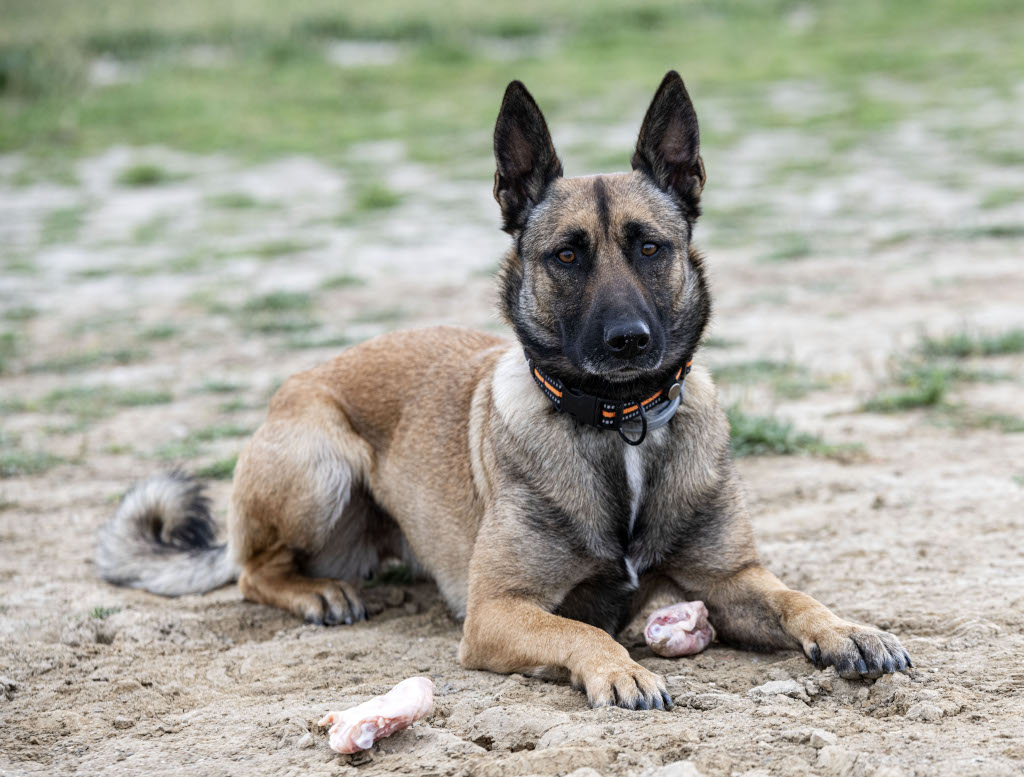
Belgian Malinois are high-energy dogs that require a diet rich in proteins and healthy fats to sustain their activity levels. High-quality commercial dog foods or a well-balanced homemade diet can work well for this breed.
Proteins are crucial for muscle development and repair, and they should be derived from high-quality sources like chicken, beef, fish, or lamb. Healthy fats, such as those from fish oil or flaxseed, provide energy and help maintain a healthy coat and skin.
Given their risk of hip and elbow dysplasia, a diet fortified with joint-supporting nutrients like glucosamine and chondroitin can be beneficial.
As always, portion control is essential to prevent obesity. The exact amount will depend on the dog’s age, size, and activity level. Treats can be a great training tool but should be given sparingly.
German Shepherd: Nourishing the Versatile Athlete
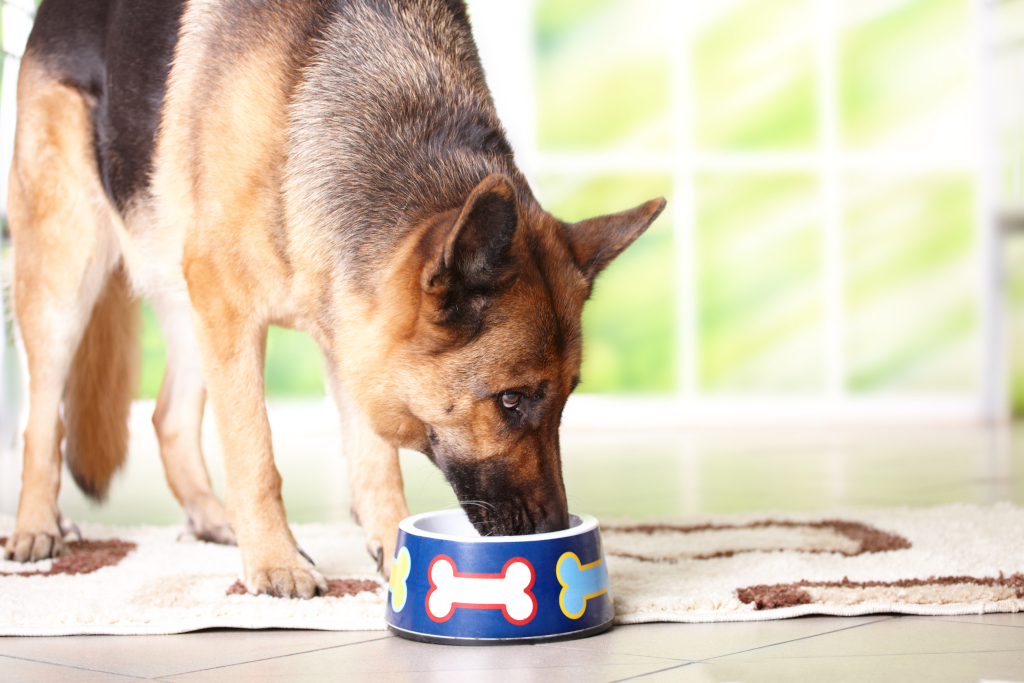
Being large, active dogs, German Shepherds also require a diet high in proteins and fats. High-quality kibbles with meat proteins are necessary for muscle maintenance, and healthy fats provide energy and support skin and coat health.
As this breed is prone to hip and elbow dysplasia and bloating, their diet needs special consideration. Foods enriched with joint-supporting supplements can help maintain joint health, and smaller, more frequent meals can help prevent bloating.
Considering their intelligence and working dog history, German Shepherds may also benefit from foods fortified with omega-3 fatty acids for cognitive health.
Portion control and a balanced diet are vital to avoid obesity, which can put extra strain on their joints. Treats should be used judiciously and should not make up more than 10% of the dog’s daily caloric intake.
You May Also Like: Common Reasons Why Your Dog Won’t Eat
Key Takeaway: Both Belgian Malinois and German Shepherds require high-quality, protein-rich diets, with some breed-specific adjustments. A well-balanced diet that considers the breed's unique needs can contribute significantly to their overall health, well-being, and longevity.
Grooming Needs: Belgian Malinois vs. German Shepherd
Grooming is a critical part of dog care, contributing to your pet’s overall health and comfort. It also provides an opportunity to bond with your dog. Let’s compare the grooming needs of the Belgian Malinois and German Shepherd.
Belgian Malinois: Low Maintenance, High Energy
The Belgian Malinois has a short, waterproof double coat that requires relatively low maintenance. A weekly brush is typically sufficient to keep their coat healthy and remove loose hair. During shedding season, which usually occurs twice a year, they may require more frequent brushing to manage the extra loose hair.
Aside from coat care, regular tooth brushing is essential to prevent dental disease. Unless they wear their nails down naturally, nail trimming is also required, typically once or twice a month. Ear cleaning should be done regularly to prevent wax buildup and potential infections.
You May Also Like: Best Dog Paw Cleaner
German Shepherd: Frequent Brushing for the Plush Coat
German Shepherds, like Belgian Malinois, have a double coat, but theirs is denser and longer, especially around the neck and tail. Their coat requires brushing several times a week to prevent matting and remove loose hair. They’re known as ‘year-round shedders’ with two heavy shedding seasons, during which daily brushing might be necessary to keep loose hair under control.
Regular tooth brushing, nail trimming, and ear cleaning are also part of the German Shepherd’s grooming routine. Like the Belgian Malinois, they should have their teeth brushed several times a week, their nails trimmed once every few weeks, and their ears checked weekly for signs of irritation or infection.
You May Also Like: Best Dry Dog Shampoo
Key Takeaway: While both breeds have fairly manageable grooming needs, the German Shepherd may require a bit more time and effort due to their denser coat. Regular grooming can not only keep your canine looking their best but can also help you keep an eye on their health and spot any potential issues early.
German Shepherd vs. Belgian Malinois: Ideal Homes and Owners
Different breeds have varying needs and, therefore, suit different types of homes and owners. This section explores what might constitute an ideal environment for Belgian Malinois and German Shepherds.
Belgian Malinois: The Active Household
Belgian Malinois thrive in active households where they can expend their energy and engage their minds. They do well with owners who can provide ample exercise, training, and mental stimulation. This could be through structured activities, dog sports, or even jobs.
Given their reserved nature with strangers, early and ongoing socialization is essential for Belgian Malinois. This breed can do well with children and other pets if properly socialized, but their herding instincts may lead to nipping at heels, especially of young, active children.
Living spaces with ample room for play and exercise, like a home with a yard, are ideal, but remember that these dogs need to be engaged, not just left alone outside.
You May Also Like: Wired Underground Dog Fences vs. Wireless Dog Fences
German Shepherd: The Family Protector
German Shepherds are loyal and protective dogs that form strong bonds with their families. They can adapt to a range of environments and are known to be good with children, making them a popular choice for family pets.
Like Belgian Malinois, they are active dogs and require a good deal of exercise. An owner who can commit to regular walks, playtime, and mental stimulation would be a good match for a German Shepherd.
Although German Shepherds can adapt to different living situations, they do best in homes where they have space to move and play. Apartments can be suitable as long as adequate exercise is provided. Early socialization is also crucial to ensure they’re comfortable with various situations, people, and animals.
You May Also Like: Are Wired Underground Dog Fences Cruel?
Key Takeaway: Both Belgian Malinois and German Shepherds require active, engaging households where their physical and mental needs are met. Belgian Malinois may require more intense activity and engagement, while German Shepherds may be more adaptable and family-oriented.
Conclusion: Belgian Malinois or German Shepherd - Which is Right for You?
Choosing between a Belgian Malinois and a German Shepherd can be a challenging decision as both breeds have numerous appealing qualities. Both breeds are intelligent, trainable, active, and loyal, making them excellent companions for the right person or family.
However, it’s essential to remember that the Belgian Malinois breed requires a high level of mental and physical stimulation, making them a better fit for active individuals or families, possibly with a working role for the dog to fill. Their intense energy and drive make them less suitable for first-time owners or those with a more relaxed lifestyle.
On the other hand, German Shepherds, while also active and intelligent, may be slightly more adaptable to various lifestyles. They are known to be good family dogs, form strong bonds with their humans, and are somewhat calmer than the Belgian Malinois.
Whichever breed you decide on, it’s important to remember that every dog deserves a loving home that can cater to their individual needs. Before bringing a new pet into your home, ensure you have the time, resources, and commitment to provide them with the care they deserve.
Remember, the goal isn’t to choose the “best” breed but to select the one that best fits your lifestyle. Whether it’s the Belgian Malinois or the German Shepherd, both breeds have the potential to bring joy, companionship, and a sense of fulfillment to your life.

